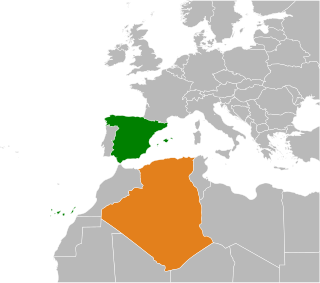Historical context

The north-west of the Maghreb, where the Sultan of Morocco exercised his influence, was plunged into disorder and violence at the beginning of the 20th century. [1] According to the British ambassador to Spain at the time, Arthur Nicholson, the existence of a country, a state and a Moroccan sultan with power beyond Tangier was a fiction, since the only thing there was a group of independent and warlike tribes and Kabyles. [2]
In 1904, the power of the Sultan of Morocco was limited by the powers that looked after the interests of their nationals in the area. Thus, for any crime, foreign residents could only be tried by the courts of their country of origin, and according to their own legislation. They were generally exempt from paying taxes, and their indigenous employees had the status of "protected", enjoying the same legal status as their employers. When the Sultan dictated any measure that affected foreign residents, he had to have the agreement of the consulates of the nations concerned. [3] On the other hand, the authority of Sultan Abdelaziz was undermined by the actions of sheriffs such as Bou Hmara in the eastern Rif or Raisuni - the leader of the mountains - and disputed by his own brother Abd al-Hafid, who would end up overthrowing his brother. [4]
This circumstance was exploited by the colonial empires to extend their influence there by using it as a trump card in the balance of power, which led to the First Moroccan Crisis and the increase in tensions that would end with the outbreak of the First World War. [5]
The crisis was temporarily resolved at the Algeciras Conference, where Germany prevented the Maghreb from falling under the sole influence of France, and an agreement was reached to exercise a protectorate in Morocco with two areas of influence, Spanish and French. [6]
The French military intervention in response to the revolts against the Sultan forced the Spanish government to rush to take positions in the places of the Protectorate where Spain was to exert its influence and begin to develop the mining industry and trade in accordance with the Franco-Spanish pacts of 1904 and 1905 [7] [8] and the conditions of the Algeciras Conference. In the agreed zone of Spanish influence there were already settlements with a Spanish presence, and in the same zone of Larache there was an indigenous police tabor under the command of Captain Ovilo y Castelo. [9] Spain and France were tasked with improving the administration of the sultanate, for which they had a police force, but they could not intervene militarily.
In this situation, José Canalejas y Méndez's Government intervened without delay in order to maintain its political and economic influence in the region. [10] With this action, Sultan Abdelaziz saw an opportunity to nullify Mulai Ahmed er Raisuni's power, while the latter hoped that the Spanish intervention would favor his interests against the Sultan. [11]
The agreements of the Algeciras Conference did not prevent the "Second Moroccan Crisis" or Agadir Crisis, which began with the French occupation of Fez on 21 May 1911, the Spanish military occupation of Larache, Asilah and Ksar el-Kebir a few weeks later, and was unleashed with the arrival of the German gunboat SMS Panther at the port of Agadir on 1 July. [12]


















